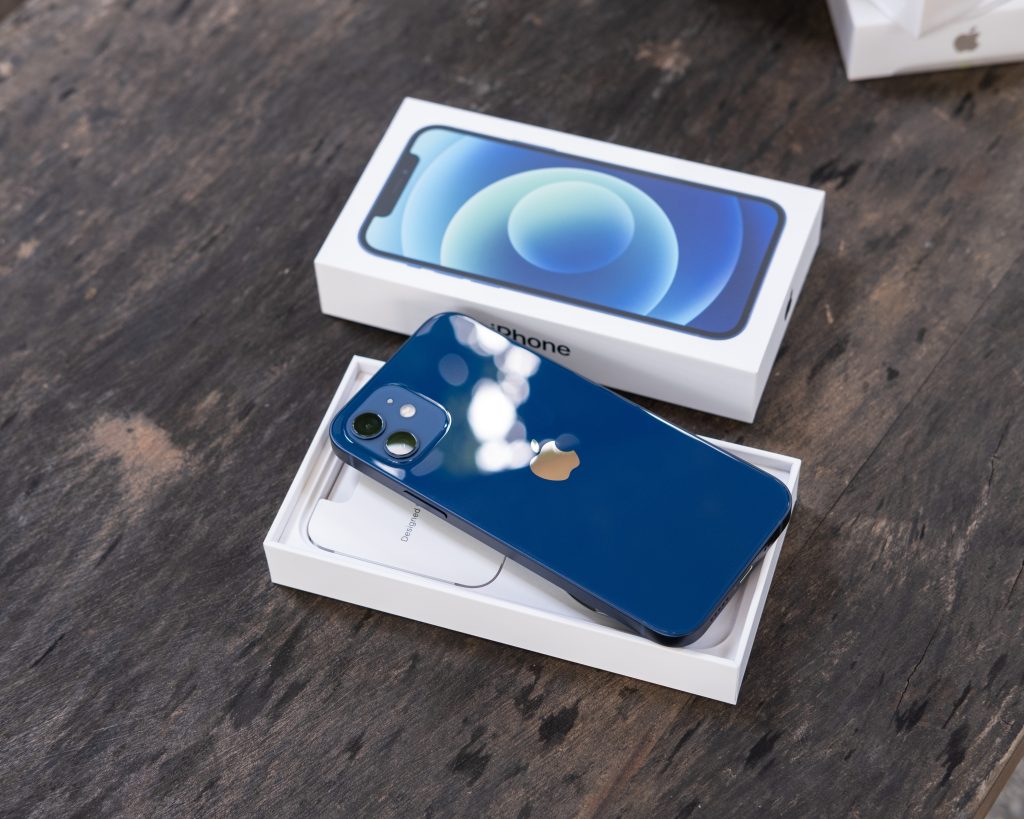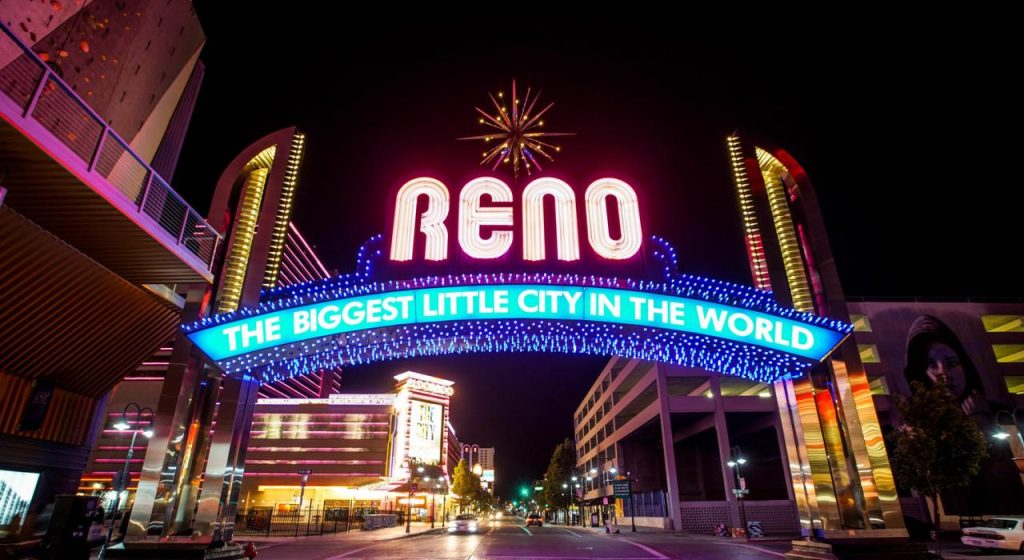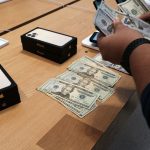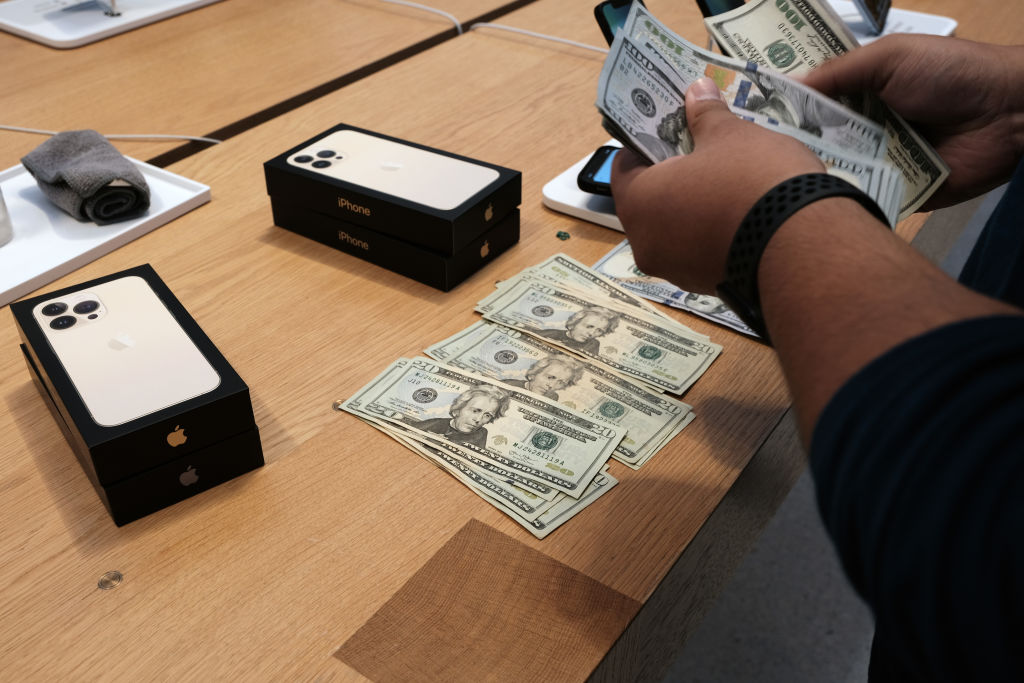
Sell My iPhone in Reno
Are you looking to sell your iPhone in Reno, NV? If so, you’re in luck! Selling iPhones in Reno offers a convenient and hassle-free way to get cash for your unwanted device. With a wide range of options available, you can easily find a buyer who is willing to pay top dollar for your phone. Whether you have the latest Apple iPhone SE or an older model, there is a demand for all types of iPhones in Reno. Selling your phone not only puts some extra cash in your pocket, but it also helps you avoid the frustration of dealing with broken or slow-performing devices.
Additionally, selling your iPhone in Reno allows you to protect your personal data and ensure that your device is properly recycled. So why wait? Take advantage of the benefits of selling your iPhone in Reno today and get instant cash for your unwanted device.
Benefits of Selling Your iPhone in Reno, NV
Are you looking to sell your iPhone in Reno, NV? Well, you’re in luck! Selling your iPhone in Reno comes with several benefits that make it the most convenient option for residents of the Reno/Sparks/Carson City/Fernley/Fallon area.
One of the main advantages of selling your iPhone in Reno is the instant cash you can receive. Instead of waiting for weeks or even months to find a buyer online or through classified ads, you can get cash for your device on the spot. This is especially beneficial if you need the money quickly or want to avoid the hassle of negotiating prices and dealing with potential buyers.
Additionally, selling your iPhone in Reno allows you to avoid the stress and uncertainty associated with selling your phone online. With online platforms, there is always a possibility of scams, fraud, or disagreements with buyers. By selling locally, you can interact face-to-face with the buyer, ensuring a safer and more secure transaction.
Moreover, selling your iPhone in Reno is a convenient option for residents of the Reno/Sparks/Carson City/Fernley/Fallon area. You don’t have to go through the trouble of shipping your device or traveling long distances to meet potential buyers. Instead, you can easily find local phone repair companies or stores that offer instant cash for your iPhone.
Types of iPhones Available to Sell in Reno, NV
If you’re looking to sell your iPhone in Reno, NV, there are a variety of models available to choose from. Whether you have the latest iPhone or an older model, there is likely a buyer in Reno who would be interested in purchasing it.
One of the most popular iPhone models on the market is the iPhone 12. This flagship device boasts a stunning Super Retina XDR display, powerful A14 Bionic chip, and a dual-camera system that captures stunning photos and videos. With 5G capabilities and MagSafe compatibility, the iPhone 12 is a top choice for tech enthusiasts.
For those seeking a more budget-friendly option, the iPhone SE is a great choice. It features a compact design, powerful A13 Bionic chip, and a single-camera system that delivers impressive results. The iPhone SE strikes the perfect balance between affordability and performance.
If you have an older iPhone to sell, models like the iPhone 8 and iPhone 7 are still in demand. These devices may not have the latest features, but they are reliable and offer a great user experience. The iPhone 8 features a glass design, Retina HD display, and a powerful A11 Bionic chip. The iPhone 7, on the other hand, sports a sleek aluminum body, Retina HD display, and a solid performance.
No matter which iPhone model you have, selling it in Reno, NV, can be a hassle-free experience. By finding a local buyer, you can easily sell your device for cash and avoid the stress of online transactions.
Reasons to Sell Your Phone in Reno, NV
If you’re in Reno, NV and considering selling your phone, there are several compelling reasons to do so. Whether you’re looking to upgrade to the latest model, need some extra cash, or simply want to get rid of your old device, selling your phone can be a smart move. With a wide range of options available, including cell phone repair companies and online platforms, you can easily find a buyer who is willing to pay a fair price for your device. By selling your phone, you not only free up space but also contribute to reducing electronic waste. So, why let your old phone collect dust when you can turn it into cash and help the environment at the same time? Don’t miss out on the opportunity to sell your phone in Reno, NV.
Accidents & Repair Issues
Accidents happen, and iPhone users in Reno, NV are not exempt. Common mishaps include cracked screens and water damage, which can render your device unusable. When faced with these issues, it’s essential to act swiftly and take the necessary steps to get your iPhone back in working order.
If you find yourself with a cracked screen, there are a few repair solutions available. DIY options include purchasing a screen replacement kit online. However, if you’re not confident in your technical skills, it’s best to seek professional help. Several repair services in the Reno area specialize in iPhone screen repairs and can quickly fix your cracked screen.
Water damage is another issue iPhone users may face. If your device gets wet, the first step is to turn it off and remove any attached accessories. Avoid attempting to turn it back on to prevent further damage. A potential solution is to place your iPhone in a bag of uncooked rice for 24-48 hours, as this may help absorb moisture. However, it’s still recommended to bring it to a professional repair service for a thorough inspection and repair.
In Reno, NV, there are several professional repair services that offer solutions for both cracked screens and water damage. These companies have experienced technicians who can address your iPhone repair needs promptly and effectively. By seeking their services, you can ensure that your device is repaired correctly to avoid any further issues.
Remember, accidents can happen to anyone, but the key is to take action quickly. Seeking professional help or exploring DIY options are viable solutions to get your iPhone back up and running. Don’t let cracked screens or water damage hold you back – prioritize getting your device repaired and back in your hands as soon as possible.
Unwanted Phones
There are several reasons why someone in Reno, NV may have an unwanted phone. It could be due to an upgrade to a newer model, switching to a different carrier, or simply no longer needing the device. Instead of throwing away these unwanted phones, they can still hold value and should be sold.
Even if a phone is no longer the latest model, it can still have value. Many people are looking for more affordable options or a spare phone for emergencies. Additionally, some individuals may be interested in purchasing older phones for parts or to use in other countries where newer models may not be available.
By selling unwanted phones in Reno NV, you can not only benefit financially but also contribute to reducing electronic waste. Recycling or selling old devices helps to extend their lifespan and prevents them from ending up in landfills.
To sell your unwanted phone in Reno NV, there are several options available. You can visit local phone repair companies that also buy used devices or use online platforms that specialize in buying and selling used electronics.
Slow-Performing or Broken devices
Slow-performing or broken devices are prime candidates for selling in Reno, NV for several reasons. Firstly, these devices may no longer meet the user’s needs in terms of speed and performance. A slow-performing device can be frustrating to use, causing delays and hindering productivity. By selling such a device, users can upgrade to a faster and more efficient model.
Additionally, broken devices, such as those with cracked screens or malfunctioning components, can significantly impact the device’s functionality. A broken iPhone, for example, may be prone to additional damage or may not function properly. By selling these devices, users can invest in a device that is fully functional and in good working condition.
Furthermore, slow-performing or broken devices often experience a decrease in value over time. As newer models are introduced to the market, older devices tend to lose their appeal and demand. Selling these devices while they still retain some value can help users maximize their return on investment.
Prepping to Sell My Phone in Reno, NV
Selling your phone in Reno, NV can be a smart move to upgrade to a newer device or simply to declutter your tech collection. Before you put your phone on the market, it’s important to take a few steps to ensure a smooth and successful sale. First, you’ll want to clean your phone and remove any personal data to protect your privacy. Next, assess the condition of your phone and make any necessary repairs or replacements. Taking high-quality photos of your phone will help attract potential buyers. Researching the market and setting a competitive price will ensure that you’re getting the most value for your device. Finally, choosing the right platform or store to sell your phone will determine how quickly and easily you can find a buyer. By following these steps, you can successfully prep your phone for sale and get the best outcome in Reno, NV.
Erasing Personal Data
Protecting your personal information and preventing unauthorized access is crucial when selling your iPhone in Reno, NV. Before handing over your device to a new owner, follow these steps to ensure that your personal data is completely erased:
- Backup your data: Before erasing your iPhone, it’s essential to create a backup of all your important data. You can do this by connecting your device to iCloud or using iTunes on your computer.
- Sign out of accounts: To prevent any potential access to your accounts and data, make sure to sign out of all your accounts, including iCloud, iTunes, App Store, and any other associated apps.
- Disable Find My iPhone: Navigate to the Settings app on your iPhone, go to iCloud, and turn off the Find My iPhone feature. This is necessary for the next step.
- Reset to factory settings: Open the Settings app, go to General, and scroll down to the Reset option. Select “Erase All Content and Settings.” This action will wipe your iPhone clean, restoring it to its original factory settings.
By following these steps, you can be confident that your personal data is securely erased from your iPhone before selling it in Reno, NV. Protect your privacy and avoid any potential unauthorized access by taking these precautions.
Cleaning the Device Exteriorly and Internally
A clean and well-maintained iPhone can greatly increase its appeal to potential buyers. To ensure a thorough cleaning of your device before selling it in Reno, NV, follow these step-by-step instructions:
1. Exterior Cleaning
- Start by powering off your iPhone and unplugging any cables.
- Use a soft, lint-free cloth or microfiber cloth to gently wipe the exterior surfaces, removing any visible dirt or fingerprints.
- Pay special attention to the screen, back panel, and edges of the device.
- Avoid using any harsh cleaners or abrasive materials that could damage the iPhone’s finish.
2. Screen Cleaning
- Use a screen cleaning solution specifically designed for electronic devices or a mixture of water and isopropyl alcohol.
- Apply a small amount of the solution to a microfiber cloth and gently wipe the screen in circular motions.
- Be careful not to apply excessive pressure or get any liquid into the device’s openings.
- If there are stubborn smudges or fingerprints, use a screen cleaning pad or a clean, soft-bristled toothbrush to gently scrub the affected areas.
3. Interior Cleaning
- Use compressed air or a soft-bristled brush to remove any visible dust or debris from the openings, such as the Lightning port, speaker grilles, and microphone.
- If there is stubborn grime or dirt, dip a cotton swab in isopropyl alcohol and carefully clean the affected areas.
- Take extra caution not to damage any internal components.
Where to Sell Your iPhone in Reno, NV
Phone buyback companies are a popular choice for selling your iPhone quickly and conveniently. These companies specialize in buying used mobile phones and offer competitive prices for your device. They provide instant cash for your iPhone, helping you avoid the hassle of finding a buyer or negotiating a price.
No matter where you choose to sell your iPhone in Reno, it’s important to prepare your device for sale. Clean the exterior and screen, remove any personal data, and ensure that your iPhone is in good working condition. This will make your device more attractive to potential buyers and help you get the best price.
How to Maximize Profits from Selling Your Phone in Reno, NV
When it comes to selling your phone in Reno, NV, there are several strategies you can employ to maximize your profits. Whether you choose to sell through phone buyback companies, electronics stores, or online marketplaces, it’s important to make sure your device is in good condition and properly prepared for sale. By following a few key steps, you can increase the chances of getting the best price for your phone and ensure a successful sale. Explore options for an EcoATM nearby Sell My iPhone Memphis to find the best selling solution.
Research the Best Selling Prices for Your Device Model
If you’re looking to sell your iPhone in Reno, NV, it’s important to research the best-selling prices for your specific device model. Determining the value of your iPhone can depend on various factors such as its condition, age, and demand in the market.
To assess the value of your iPhone in Reno, NV, you can start by exploring reliable online platforms and websites that provide information on average selling prices for similar devices. These platforms offer insights into the current market trends and help you get a better understanding of how much you can expect to sell your iPhone for.
Consider checking websites like eBay, Craigslist, and Gazelle, as they often display average selling prices for iPhones in different conditions and locations. You can filter your search results based on the model, storage capacity, and overall condition of your iPhone.
Remember that the condition and age of your device play a significant role in determining its value. A well-maintained and newer iPhone model generally fetches a higher price compared to older or damaged devices.
Check Trade-In Programs & Offers
When selling your iPhone in Reno, NV, checking trade-in programs and offers is a smart way to get the best value for your device. Trade-in programs allow you to trade your old iPhone for a predetermined amount of money or store credit, which can be used towards the purchase of a new device or other products.
To get started, research local electronics retailers and online platforms that offer trade-in programs for iPhones. Some popular options include Apple’s trade-in program, carrier trade-in programs like Verizon and T-Mobile, and online marketplaces like Gazelle and Decluttr. These programs typically have easy-to-navigate websites where you can input the details of your iPhone, such as the model, condition, and storage capacity, to receive an instant quote.
The benefits of trade-in programs are twofold. Firstly, they provide a streamlined and hassle-free selling process, as you can trade your iPhone in-store or ship it to an online marketplace. Secondly, trade-in programs often offer competitive prices and additional incentives, such as price locks or promotions, which can increase the value of your device.
To ensure the best value for your iPhone, it is important to research and compare trade-in offers. Take the time to visit multiple trade-in program websites and input the details of your iPhone to receive quotes. Compare these quotes, paying attention to factors like the offered price, any additional promotions or benefits, and the reliability and reputation of the trade-in program. By doing your due diligence, you can maximize the value you receive for your iPhone when selling it in Reno, NV.
Negotiate Deals with Buyers Selling Your Phone Privately vs. Professionals
When selling your phone privately, you have the opportunity to negotiate deals directly with potential buyers. This allows you to have more control over the selling process and potentially maximize your profit. You can set your own price and negotiate with buyers to get the best offer possible. However, selling privately can also be time-consuming and inconvenient. You have to find interested buyers, arrange meetings, and handle the transaction yourself. It can also be risky, as you may encounter scammers or unreliable buyers.
On the other hand, working with professional sellers in Reno, NV can offer advantages such as convenience and safety. Professional sellers, such as electronics retailers or online platforms, typically have established processes in place for buying used phones. They provide a streamlined and hassle-free selling experience, where you can easily get an instant quote and sell your phone in-store or online. This eliminates the need to negotiate with individual buyers and handle the transaction yourself.
However, when selling to professional sellers, you may not have as much room for negotiation and may receive a lower price compared to selling privately. They often have set prices or offer trade-in values based on predetermined factors like the condition and model of the phone. It’s important to consider both the potential profit and the convenience and safety factors before deciding which option is best for you. If you’re in New Orleans and looking to sell your iPhone, consider exploring options for New Orleans cash for iphone to maximize your profit and ensure a smooth selling process.
Tips for Selling Your iPhone Privately in Reno, NV
If you’re looking to sell your iPhone privately in Reno, NV, here are some top tips to help you get the most out of your sale.
1. Accurate descriptions: When creating your listing, be sure to provide detailed and accurate descriptions of your iPhone. Include information about its model, condition, and any additional accessories or features.
2. High-quality photos: A picture is worth a thousand words, so take high-quality photos that showcase your iPhone’s condition. Capture images from different angles and ensure good lighting to attract potential buyers.
3. Fair pricing: Research the current market value of similar iPhones in Reno, NV to determine a fair price. Be prepared to negotiate, but also set a minimum price that you’re willing to accept.
4. Meeting in safe public locations: When meeting potential buyers, prioritize your personal safety. Choose public locations like coffee shops, malls, or police stations. Avoid meeting in secluded areas or late at night.
5. Secure transaction: Ensure a smooth and secure transaction by only accepting cash or a verified payment method like PayPal. Double-check the authenticity of the payment before handing over your iPhone.
By following these tips, you can increase your chances of selling your iPhone privately in Reno, NV successfully. Remember to prioritize safety throughout the entire process.

Considering Selling Options in Reno, NV: Sell My iPhone Baton Rouge EcoATM Nearby
When selling your phone in Reno, NV, evaluate the pros and downsides of private vs professional sellers. Sellers might also try Sell My iPhone Baton Rouge EcoATM and other choices outside Reno.
Privately selling your phone lets you negotiate arrangements with purchasers, giving you more control and perhaps increasing your earnings. You must discover purchasers, organize meetings, and conduct the transaction yourself, which takes time and is inconvenient. For sellers considering Sell My iPhone Baton Rouge EcoATM nearby, fraudsters and untrustworthy purchasers are a concern.
Working with expert vendors is safer and more convenient. Sellers like electronics merchants and internet platforms ease the selling process. Instead of negotiating with purchasers, you may obtain a quick quotation and sell your phone in-store or online. Professional vendors may be less flexible and provide a lower price than individual sellers, so sellers contemplating Sell My iPhone Baton Rouge EcoATM nearby should keep this in mind.
By weighing the possible profit, convenience, and safety, sellers may decide whether to sell privately, work with professional sellers in Reno, NV, or use Sell My iPhone Baton Rouge EcoATM nearby. Each solution has pros and downsides, so you must decide which one fits your needs.
Conclusion
In conclusion, selling iPhones in Reno, NV requires careful consideration and attention to detail. To attract potential buyers, it is essential to provide accurate descriptions and high-quality photos that showcase the iPhone’s condition. Researching the current market value will help determine a fair price, while being open to negotiation and setting a minimum acceptable price is important. Prioritizing personal safety when meeting potential buyers is crucial, and choosing safe public locations is recommended. When it comes to the transaction, it is advisable to accept cash or verified payment methods like PayPal, ensuring the authenticity of the payment before handing over the iPhone. By following these steps, individuals can confidently sell their iPhones in Reno, NV and potentially receive a fair price for their device.

 The Top Reasons Why the Apple iPhone 13 Offers the Best Value
The Top Reasons Why the Apple iPhone 13 Offers the Best Value  Cash For Phone in Reno
Cash For Phone in Reno  Cash for iPhone Reno
Cash for iPhone Reno  Phone Buyer in Reno
Phone Buyer in Reno 









